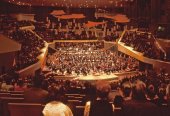 Neuerscheinungen 2019Stand: 2020-02-01 |
Schnellsuche
ISBN/Stichwort/Autor
|
Herderstraße 10
10625 Berlin
Tel.: 030 315 714 16
Fax 030 315 714 14
info@buchspektrum.de |

Kurt Brandle
Architecture as Embodiment of Function in Form
2019. 112 S. 120 Abb.
Verlag/Jahr: EDITION AXEL MENGES 2019
ISBN: 3-86905-021-7 (3869050217)
Neue ISBN: 978-3-86905-021-8 (9783869050218)
Preis und Lieferzeit: Bitte klicken
The aspects surrounding form and function, especially
those Louis Sullivan has touched on and
described, have given rise to over a century of
controversies. Many have not been settled and
demand rethinking again and again in response
to newly developed understanding. Even the
slight change of "function" in "form follows function
" to "functions" raises a host of questions,
not to speak of addressing in depth the ambiguity
of "follows".
The book addresses recently evolved understanding
and expands upon. A problem here,
as in most discussions within complexity, is the
meaning of the key terms as typically used. They
require clarity to advance successful communication.
The definitions in this book on embodiment,
function and form are pragmatically derived
from broad experiences with the design of
architecture: why it is, what it is and what it does.
This threefold tenet and justification of architecture
is brought in the open by a highly diverse
sequence of numerous built examples. Each has
embodiment of human needs and desires, or it
could rightly not be called architecture. Some of
the embodiment is obvious, some is not. Whatever
is the case, the connections made between
the ideas about need or desire and the physical
properties, which constitute buildings, are what
we take as functional relations. They are not all
what function is, but they are at the center to
bring it about.
There happens twofold embodiment as process.
On one hand it is the transformative action
to find properties which fulfill the needs and desires.
On the other hand it is the emergence of
feeling from our thinking bodies evoked by these
properties during the design or the experience of
architecture, calling for judgment. To show this
duality abundantly and in detail is what the book
is about. Crucially, it also reveals the significance
of form as reality and evidence.
Finally the text elaborates on the implications
of aesthetics in all of this, with one of the surprises
being the fact that the aesthetic may not
be only result to acknowledge but also function
to start with. Overall, the purpose of the book is
to provide a workable understanding of embodiment,
function and form through the ways they
hang together
Brandle, Kurt
Kurt Brandle is professor emeritus of architecture
at the University of Michigan. He studied
at the Technische Hochschule Stuttgart and the
Technische Universität Berlin, and graduated
from the latter with diploma and doctoral degree.
His work in practice, research, teaching and writing
concentrated on building systems, environmental
controls and energy conservation. Out of
this involvement emerged over the past decade
his heightened interest to make issues of meaning
in architecture as explicit as possible.


